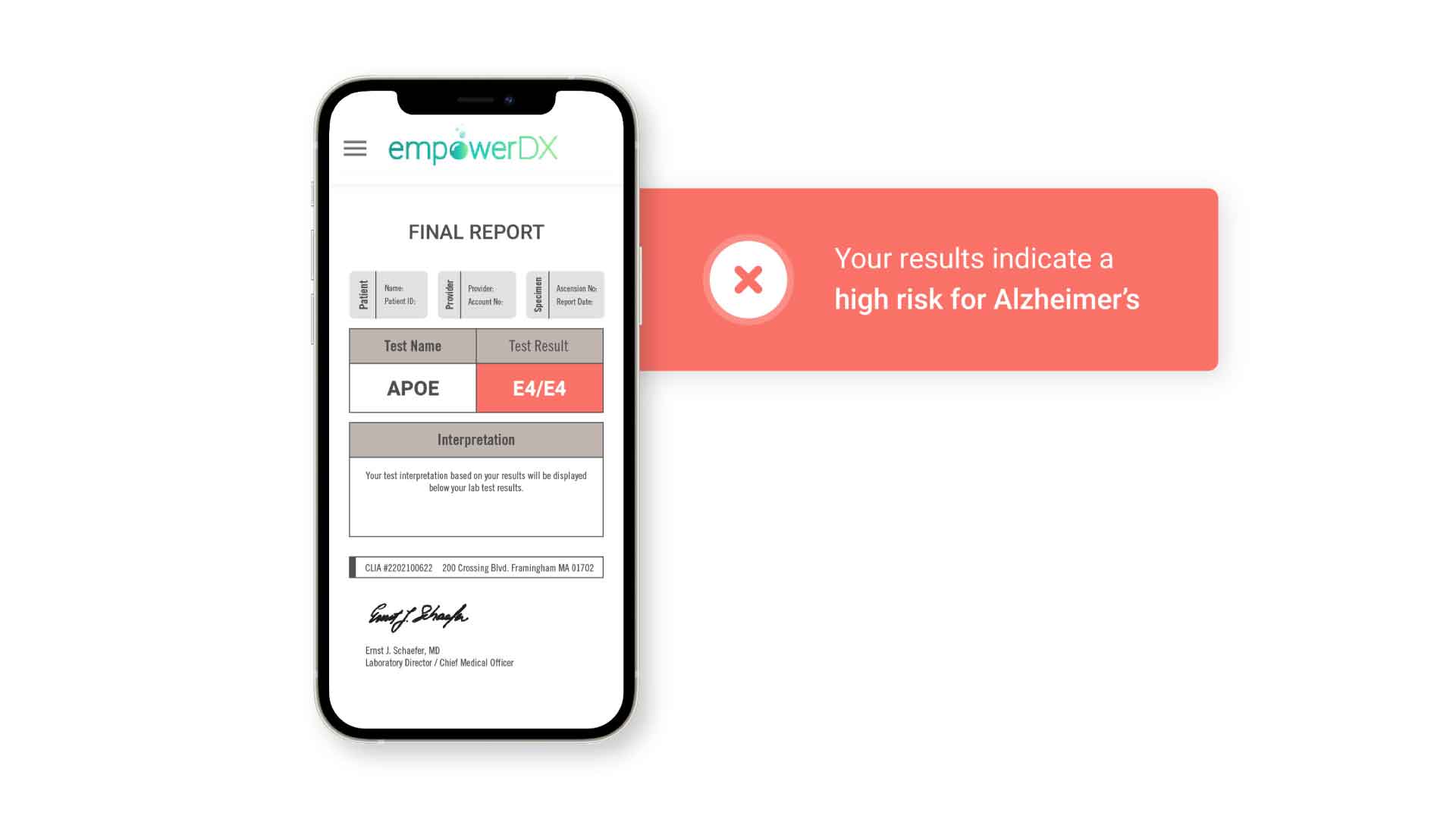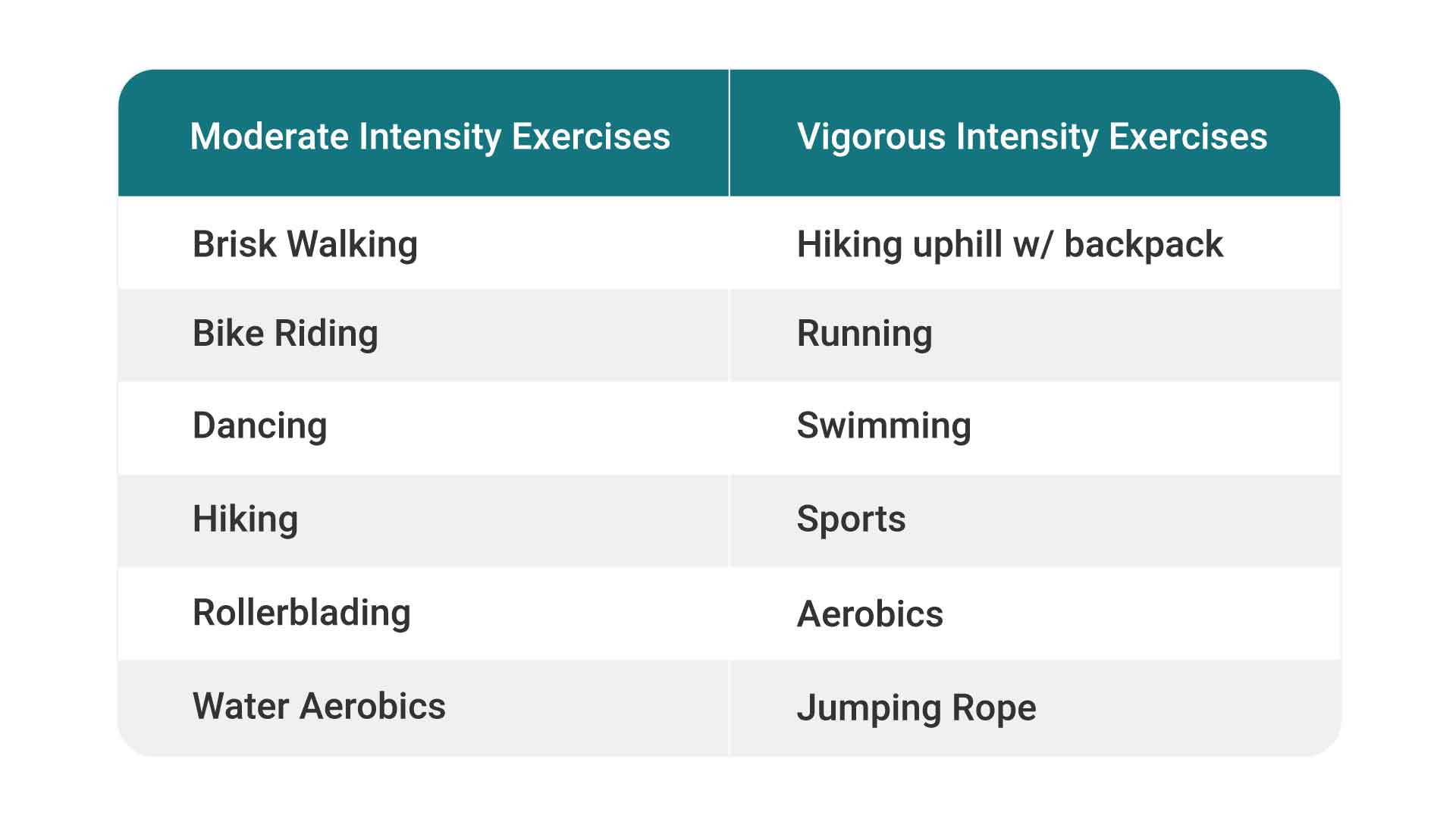It’s almost a new year – and that means it’s time to break out those running shoes and set some new exercise goals. But if we’re honest, it can be hard to stick with health resolutions past the month of January, even if you know better health habits will be good for you.
Your exercise goals are more than just another box to check on your to-do list. In fact, some emerging research suggests that exercise may be able to help your brain stay healthy in the long term. Find out what could be putting you at risk for neurodegenerative disease – and how exercise could help reduce your risk.
Genes and Alzheimer’s disease
To understand how exercise can help your brain stay healthy, you need a crash course on one specific gene – your APOE gene.
APOE is a gene that helps you make apolipoprotein E, which helps your body move and store cholesterol and fats. By doing this, APOE helps keep your nerve tissues healthy and functioning, and also assists with cell repair.
However, variants in your APOE gene have also been associated with a greater risk of developing neurodegenerative diseases. Research has found that people who have one or two copies of the e4 variant (or allele) of the APOE gene are at an increased genetic risk for developing Alzheimer’s disease and dementia later in life. [1] You can take a deeper dive into the link between your APOE gene and Alzheimer’s disease in another article.
If you're not sure if you have a specific variant of the APOE gene, an at-home APOE gene test can help you get answers. But once you get your results and find out you may be at greater risk, is there anything you can do to reduce that risk?

Exercise and APOE
Even though you can’t change your genes, there are actions you can take that may help reduce risks presented by those genes. Emerging research suggests that exercise may be able to help you reduce your risk of developing Alzheimer’s disease, and those effects may be notable in people with the APOE e4 allele.
According to a 2005 population-based study, leisure-time physical activity at least twice a week was associated with a reduced risk of dementia and Alzheimer’s disease. These associations were stronger in individuals who carried the APOE e4 allele. [2]
Another 2021 review article found that carriers of the APOE e4 allele were more responsive to the benefits of exercise compared with people who carried a different allele. [3] This review also noted that exercise may help improve cognitive test scores and prevent neurological decline in people who are at high risk due to their genes. However, other studies have found that the benefits of exercise aren’t just limited to people with the e4 allele of the APOE gene. Another study of 1,646 older adults over a 5-year period found that, in adults who weren’t carriers of the APOE e4 allele, the odds of developing dementia were lower in people who exercised than people who didn’t exercise. [4]
While scientists are still determining the exact connections between APOE and exercise, this emerging research can be a great motivator to pick up your exercise routine and start implementing more healthy habits this year. And don’t forget – an at-home APOE gene test can be your first step toward health answers.
How to get more exercise
Whether you’re completely new to exercise or just need to get back into a routine, here are five ways to help you start working out more regularly.
- Visit your healthcare provider before beginning a new exercise regimen.
- According to the CDC, aim for 150 minutes of moderate-intensity aerobic physical activity, or 75 minutes of vigorous-intensity physical activity each week.

- Find ways to incorporate movement into your everyday routine, such as taking a 10-15 minute walk over your lunch break or using the stairs instead of the elevator.
- Choose activities that interest you. If you like the outdoors, try hiking or biking. Or, if you like more structured activity, try a workout class at your local fitness studio or gym.
- Find a friend or acquaintance to work out with so you can stay accountable.
It’s time to dust off your workout gear and head outdoors or to your local gym, and take your next step to help keep your brain and body healthy in the new year!
Sources
[1] Farrer, L. A. “Effects of Age, Sex, and Ethnicity on the Association between Apolipoprotein E Genotype and Alzheimer Disease. A Meta-Analysis. APOE and Alzheimer Disease Meta Analysis Consortium.” JAMA: The Journal of the American Medical Association, vol. 278, no. 16, 22 Oct. 1997, pp. 1349–1356., doi:10.1001/jama.278.16.1349.
[2] Rovio, Suvi, et al. “Leisure-Time Physical Activity at Midlife and the Risk of Dementia and Alzheimer's Disease.” The Lancet Neurology, vol. 4, no. 11, Nov. 2005, pp. 705–711., doi:10.1016/s1474-4422(05)70198-8.
[3] Colovati, M.E.S., et al. “Interaction between Physical Exercise and APOE Gene Polymorphism on Cognitive Function in Older People.” Brazilian Journal of Medical and Biological Research, vol. 54, no. 2, Dec. 2020, doi:10.1590/1414-431x202010098.
[4] Fenesi, Barbara, et al. “Physical Exercise Moderates the Relationship of Apolipoprotein E (APOE) Genotype and Dementia Risk: A Population-Based Study.” Journal of Alzheimer's Disease, vol. 56, no. 1, 12 Jan. 2017, pp. 297–303., doi:10.3233/jad-160424.


